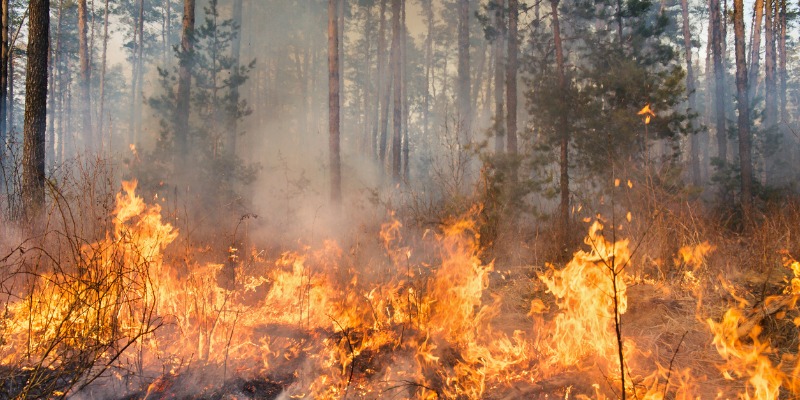The beekeepers’ rebuttal
Beekeepers across Canada denounce beekeeper lawsuit against pesticide companies
By Patrick Meagher
A $450-million beekeeper lawsuit against the makers of pesticide-treated seeds has been denounced by beekeepers across the country as a knee-jerk, emotional response that polarizes positions and shuts down collaborative efforts to minimize ongoing bee deaths.
Hugh Simpson, owner of Osprey Bluffs Honey in Western Ontario, resigned two years ago as a director with the Ontario Beekeepers Association, when members voted to call for a ban on neonicotinoid-treated seeds. Neonics are on almost all corn and soybean seeds in Ontario.
Simpson argued that the association includes a large range of beekeepers, including many backyard and part-time hobbyists who have taken an unnecessary adversarial position when pesticides are only one of many factors affecting bees.
"There isn’t a silver bullet on this," Simpson told Farmers Forum. "If you ban the neonicotinoid you will have solved one factor issue. It will be like that (Whac-A-Mole) game at the carnival. You whack a mole, then three or more pop up."
Simpson started the Independent Commercial Beekeepers Organization, which includes about 20 full-time commercial beekeepers. While Simpson said he is not a spokesman for the organization, he emphasized that commercial beekeepers and commercial crop farmers are the ones needed to work out a way forward.
"The solution is to get reasonable and invested stakeholders at the table, and that’s not government and that’s not hobbyists and environmentalists, who are emotionally engaged, and now it’s not the Ontario Beekeepers’ Association," he said. He added that he accepts that neonics are an approved pesticide and that stakeholders "need to first learn about bee livestock, recognize that we are collaborative and that no one will ask for something that will put someone else out of business."
Lost in the debate is that small-scale beekeepers don’t always know what is killing their bees and bees don’t handle stress very well. The biggest factors in bee deaths are pests, pesticide exposure, lack of food (due to weather conditions or crop farms expanding their corn and soybean fields) and beekeeper error, Simpson said. So, a beekeeper might now be in a terrible location because the farm next door has increased its grain production and his bees have to fly a long way for food, he said.
"I kill lots of bees every year because I make mistakes or I don’t treat or I run hard to try and get honey and I make compromises. We all make economic decisions. But I have experience and I make strategic choices. There are a whole bunch of other beekeepers who really don’t know what they are doing and kill a lot of bees" and blame it on neonics.
"When your livestock is an insect that only lives for a month or five weeks, and in order to get a crop you need to keep a cycle of life going in a hive, that is really dependent on one of 60,000 insects in that box — that’s the queen — there’s a lot that can go wrong. If a beekeeper moves the box the wrong way — if you crush the queen — you lose the hive."
Too much pesticide exposure will kill bees but most people involved in the debate are not full-time farmers or beekeepers and they have already decided that even one fraction of one part-in-a-billion of pesticide is too much, said Simpson. "This is not a science conversation anymore."
Alberta commercial beekeeper Lee Townsend agreed. The former vice-president of the Canadian Honey Council said that the most noise over neonics is coming from the small-scale hobbyists who have fallen in with the anti-biotechnology environmentalist movement. The environmentalist group Sierra Club Canada introduced the Ontario Beekeepers’ Association to a class-action litigation firm.
The Alberta Beekeepers Commission has already spoken out against the lawsuit, Townsend said, adding that the Canadian Honey Council and the Saskatchewan and Manitoba beekeepers will also be issuing statements. "It’s going to be difficult for them to make this a national issue when 85 per cent of the industry is against it."
Townsend added that Alberta beekeepers went through a similar situation. In 2008 when some operators lost up to 90 per cent of their hives, "We didn’t blame it on one thing that we thought could be the problem. We worked with other beekeepers, government, crop farmers, and seed companies and now our losses aren’t what they used to be. We are growing and our production is up every year. Our hives are healthier."
After millions of bee deaths were reported during spring planting in 2013, mostly in Western Ontario, the province required neonics be used with a coating to keep the pesticide dust down and many farmers attached dust reflectors to their planters. The result this year: bee death incidents dropped to one-third the level of incidents last year. For each incident reported the number of bees affected was 10 times lower than last year.
Patrick Meagher is editor of Farmers Forum newspaper.
October 2014: The beekeepers’ rebuttal.
![]()




